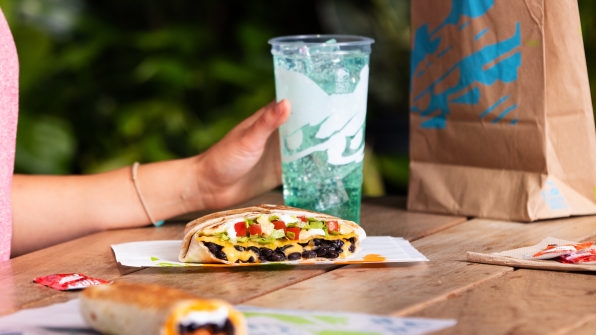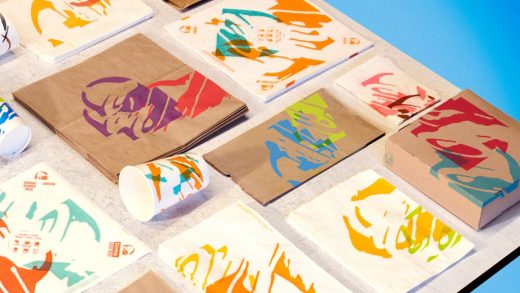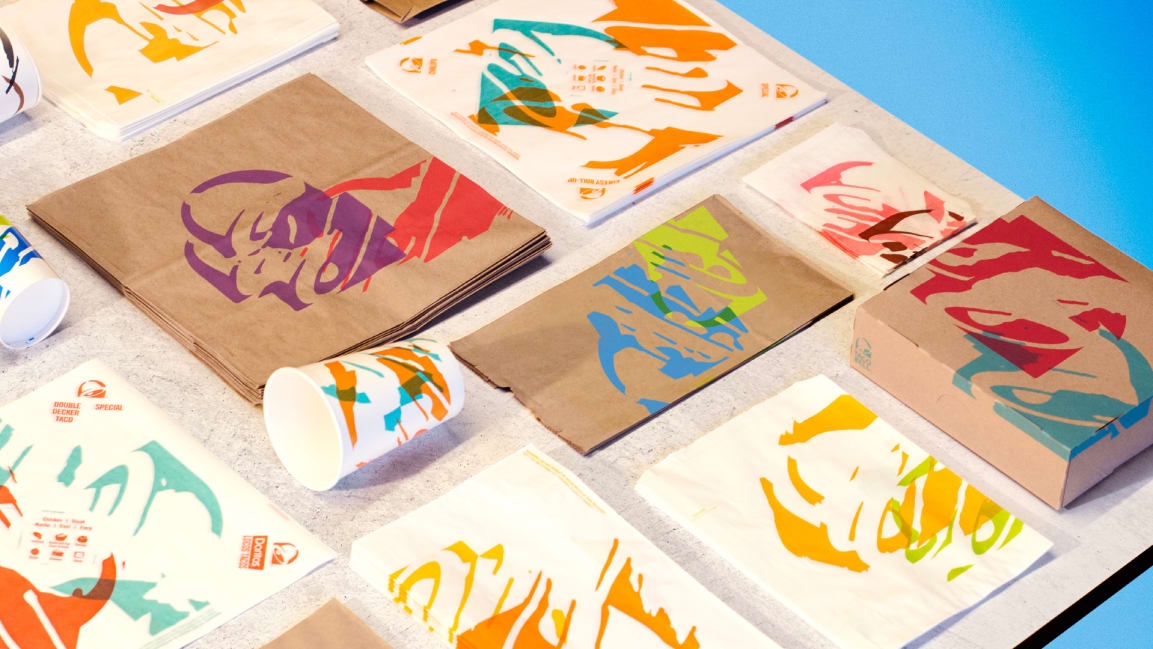Taco Bell says it will make all its packaging recyclable, compostable, or reusable by 2025
You may not think of the provider of a late-night greasy fix as the most environmentally sound company, but Taco Bell has already made a few moves toward cleaning up its footprint: recyclable cold cups and lids? They began rolling out in 2018. Vegetarian options? They were always there, though a 2019 menu highlighted those bean-based meals. Paper bags instead of plastic? Customers have been bringing home their tacos that way for years. And next up for Taco Bell: a pledge to make all its packaging recyclable, compostable, or reusable by 2025.
As part of its 2020 commitments, Taco Bell says it will convert all consumer-facing packaging—that’s anything the customer comes into contact with when they order food, like the wraps around tacos or the physical box that holds the $5 Cravings Box items—to be either reusable, recyclable, or compostable at all locations across the globe within the next five years.

The company will install recycling and composting bins in restaurants where local infrastructure permits (not every municipality supports those waste streams), and the new packaging materials will also be free of PFAS, phthalates, and BPA—chemicals abundant in food packaging that have been associated with negative health effects like cancer, thyroid disease, and low birth weight.
Missy Schaaphok, Taco Bell’s global nutrition and sustainability manager, says the brand is still figuring out exactly what that new packaging will be. “We want to ensure that convenience and functionality are very top of mind when it comes to our packaging,” she says. “Sure, the look and feel might change—especially if we move away from black plastic, for example, with our power bowls, to something else that might be fiber based. That will be a dramatic change, but we want to ensure that the . . . customers have the same experience, but with the sustainability aspects in mind.”
Schaaphok wouldn’t disclose how much waste current Taco Bell packaging accounts for, or quantify specifically how much waste the commitment will reduce, but she says there’s a lot of internal conversations happening around those topics. “We are working with our suppliers and franchisees on our entire global system to understand what we’re implementing, where we want to benchmark, and then how we can properly track our progress and make those impacts every year,” she says.
Taco Bell will address its packaging issues in the order of the proverbial three R’s: reduce, by consolidating or eliminating packaging elements; reuse, by offering, for example, food baskets at dine-in only locations; and recycle, where the compostable and recyclable elements come in. “That’s going to be a big, big focus for us,” Schaaphok says, “so that we can ensure that all of our packaging will either be recyclable or compostable rather than ending up in the landfill.” What type of compostables, specifically, will depend on what will be accepted across the board. “We have 7,000 restaurants across the U.S.,” she says. “We want to make sure that we have the most likelihood that it will be composted.”
Some Taco Bell packaging already fits the bill, though some of its sustainable claims make it clear that the company is giving itself a lot of semantic leeway in hitting its goal: Schaaphok notes the Mini Skillet Bowl is deemed “reusable” since it’s microwave safe, and the company’s website suggests you wash them and use it “as storage for knickknacks.” How many items will be theoretically “resuable” like this by 2025? What it will do with the plastic hot sauce packets also remains an open question.
The company is already working on providing compostable or paper straws in places that legally require them. A big hurdle, then, will concern communication. The company will develop training materials for its employees so they can help customers properly dispose of the packaging in Taco Bell locations, and include communication on the packaging so that customers who take away orders will know what to do with it.
There’s still a lot Taco Bell has to figure out—a specific team will be focused on working with packaging suppliers to rethink packaging with a focus on sustainability, functionality, and communication—but Schaaphok is confident it can meet its 2025 goal. “A good portion of our packaging today is already recyclable or compostable, so we’re going to be focusing on the elements that aren’t,” she adds, and regional testing for those packing elements will happen throughout this year.
To complement its waste goals, the company also says it’s working to be the number-one quick-service restaurant for vegetarians in the U.S., even as McDonald’s and Burger King add more plant-based options. It was the first and is still the only quick-service restaurant to offer American Vegetarian Association-certified food options with its vegetarian bean proteins and customizable menu (a tip for vegans: making your order “fresco style” subs pico de gallo in place of mayo-based sauces, cheeses, and sour cream).
“Now what we’re focusing on is really making it easier for customers to access vegetarian, so you can expect more from us there, whether it’s more vegetarian ingredients or how people can access or order [vegetarian],” says Schaaphok. “More of those details are still yet to come, but . . . basically, we’re going to make ordering vegetarian easier for Taco Bell, and do it in a uniquely Taco Bell way.”
(20)



